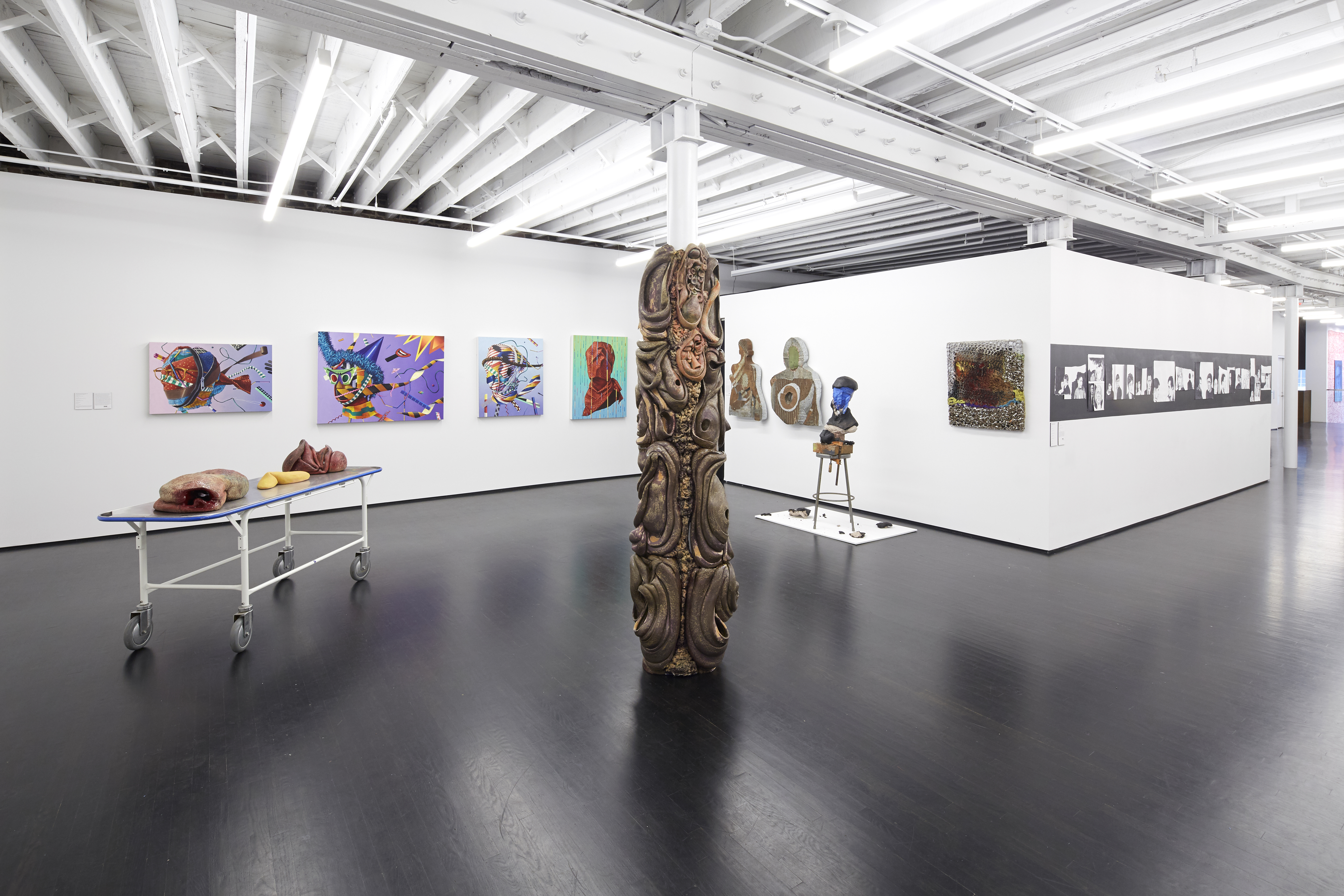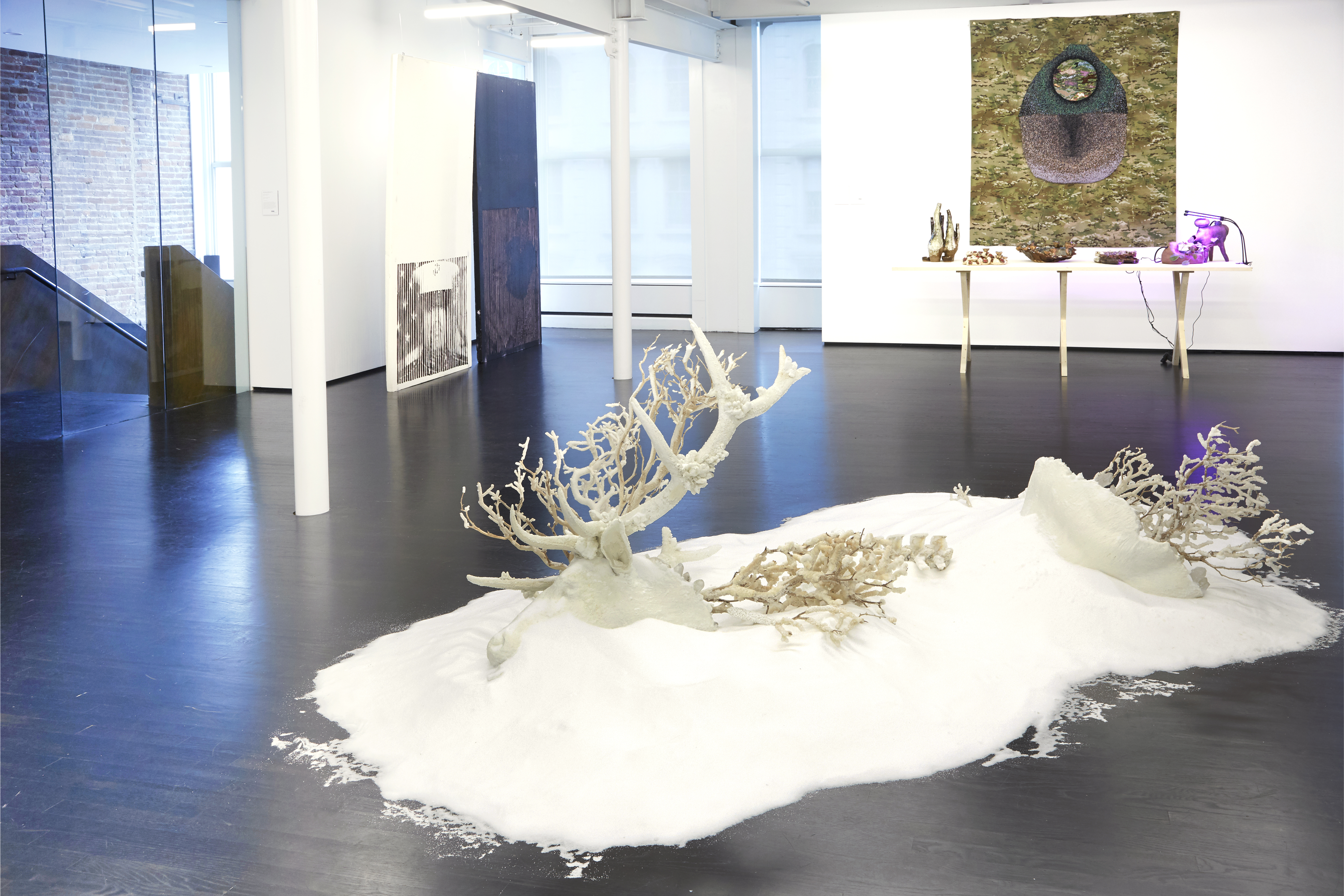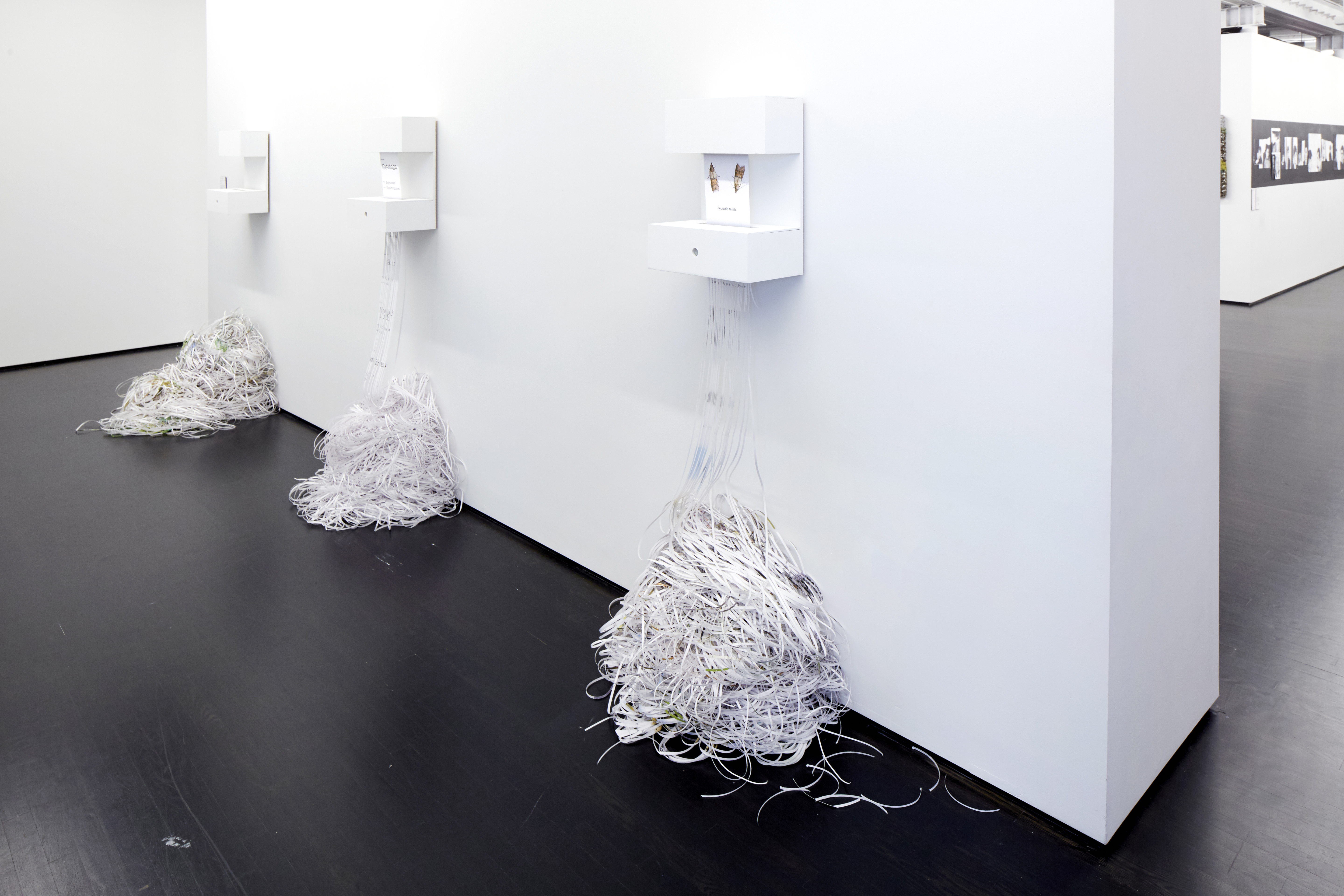

Above: Install. All images courtesy of KMAC Museum.
︎ KMAC Museum, Louisville
Crown of Rays
The Inaugural KMAC TriennialReview
Leah Hughes
There is a palpable feeling of transition in Louisville, Kentucky. Old Main Street facades in stages of decay for most of recent memory are being gutted and filled with bourbon and tourists. The city is swelling to hold a new version of itself with bigger ticket attractions, swankier boutique hotels, and an even greater number of out-of-state plates lining residential streets as Airbnbs consume neighborhoods. In appearance, Louisville’s marketability to transient culture-seekers is at an all time high. But what of the state of culture for those of us who call Kentucky a past or present home? Crown of Rays, KMAC Museum’s Triennial Exhibition, is a harbinger of a different kind of evolution—proof that there is invention coming from places within Kentucky to the benefit of those of us who consider the state as a significant part of our stories.
Crown of Rays has something for all viewers, from technically-minded craftspeople, to concept-forward thought-seekers and performers, to curious viewers of any background looking for art that somehow speaks to their lived experience. The body of work is diverse, representing commentary on colonialism, displacement, environmental precarity, and countless other themes discussed locally and through a global lens. Notably, this exhibition places the work of Kentucky-based artists in the prime of their careers at the forefront.
There are many examples of technical achievement of the show—Mary Carothers’s Full Circle (2019) sculptural installation in porcelain, salt, quartz, antlers, and branches stands out as a particularly adventurous foray into technical proficiency with unconventional materials. What appears to be a deer or elk carcass—a familiar sight to many Kentuckians with rural roots—is positioned in the middle of the gallery floor in all white, as if calcified in snow and ice. The vision is familiar but invites closer examination as there are few immediately discernible sculptural elements within the work. The elegant morbidity of Full Circle keeps the viewer’s attention circling around the ethereal salt-enshrined horned form while inviting inquiry into its composite parts.
Conversely, there are other works in the show that don’t emphasize technical prowess or conventional beauty but pull their weight in conceptual complexity and interactivity with the viewer. Andrew Cozzens’s I’m Sorry We Are Meeting Under These Circumstances (2019), a mixed media installation tucked away behind a window-facing wall in the gallery space, is one such example. Three clinical-looking machines are wall-mounted neatly in a row, hovering over piles of shredded paper. On closer examination, each pile represents something extinct: a language, an animal, or a plant printed on the seemingly infinitely long scroll of finely shredded paper. As the viewer passes by the machines, motion sensors trigger the machine to produce more shredded material, emphasizing the connection between the viewer’s consumption of space and time and the ongoing destruction of species and languages as extractive economics destroys entire ecosystems and cultures in service of capitalism. Right before it enters the shredder, there is an intact section of paper that is still discernible on the page, threatened by the impending motion of the viewer.
Above all, the emotional weight and complexity of works like Vinhay Keo’s Kissing Kissinger (Portrait of a Nobel Peace Prize Winner) (2019) represent the most impactful works of the entire exhibition. Keo’s work is labelled as an installation of acrylic paint and a photograph of Henry Kissinger, notoriously genocidal imperialist American Secretary of State and one of the forefathers of American military interventionism as an anti-communist tool under the Nixon and Ford administrations. The portrait is positioned well above eye level on a wall approximately 2 tall stories high, printed in blue scale on a glossy aluminum-like finish, at two to three times life size. All around Kissinger are imprints that upon further examination are kiss marks in red acrylic paint, covering nearly every inch of surface on the large expanse of white wall. The imprints first invite curiosity: kisses are usually playful gestures, and Kissinger’s name is a play on that, especially in the context provided that he is a recognized “peacemaker” by the Nobel Foundation. On further examination, however, the viewer is invited to consider the sinister and physically excruciating task of covering one’s own lips in red acrylic paint, a notoriously fast-drying toxic medium, and kissing an enormous wall thousands of times while meditating on Kissinger’s bloody legacy. Keo’s execution is bravely evocative while maintaining a degree of restraint—through precise symbolism, he reveals the intimacy of this painful implied performance. It is a visually striking work with a sobering and relevant message.
The significance of a triennial exhibition of this caliber taking place in Kentucky cannot be understated. Beginning in the first years of the 2000s, the Speed Art Museum in Louisville transformed from an aging marble hall full of old Dutch masters to a near-unrecognizable glass-addled campus where big ticket modern and contemporary exhibitions and films attract new swaths of guests. The now-ubiquitous regional 21c Museum Hotel opened to much fanfare as one of Louisville’s best places to view contemporary art in 2006. In 2016, KMAC underwent a major update and remodel and was able to introduce free admission to their programming. The KMAC Triennial is, in some ways, representational of an updated set of expectations and standards for visual artists in the state and for institutions in the region.
The cohort of working artists in this age group are working within a Kentucky whose political reality is also changing by the leadership of a new generation. Though the show has a broad representation of ages, 15 out of the 20 artists featured are under 45. A third of the artists featured are in their 30s. Statewide, a wave of young politicians from underrepresented identities elected since 2016 represent a changing face of Kentucky politics and culture in an unprecedented shift towards representative, forward-thinking government. Locally, young community organizers of color and of working class and poor backgrounds (including but not limited to those involved with Black Lives Matter Louisville, Mijente, and Louisville Youth Group), student activists and creatives (like those affiliated with Sunrise Movement and the Louisville Story Program), and other young people are leading the transformation of our identity in what feels like a moment of collective upheaval and innovation. Crown of Rays feels very much like a part of this pivotal moment in history where our identity as Kentuckians is changing, and these artists are undoubtedly changemakers with much work left to be done.
The phrase “Crown of Rays” intimates a satisfying cultural end point or canon, crowned and throned. Conversely, the Louisville art scene has been characterized from within by whispers and insistences that there is no creative ecosystem to sustain artists locally—not enough conceptually innovative galleries for support, not enough infrastructure for conceptual artists to thrive, not enough critical feedback at the caliber needed to be nationally or internationally reputable. Artists are everywhere, but are our artists being pushed? Are they making challenging work? Are they able to share that work in an environment where they feel supported and can receive meaningful feedback? To be clear, Crown of Rays is in no way a satisfying answer to all of these questions or an end point for the rapidly changing nature of fine arts culture in Louisville and in Kentucky. Crown of Rays is not quite a coronation for some new set of finalized treatises on who we are. It is something arguably more exciting: a sprouting seedling of what Louisville’s art scene is to become and evidence that, yes, things are in alignment for creative ingenuity in Louisville, and within a greater narrative of an exciting era of change in what it means to be Kentuckian.
-
Leah Hughes
Contributor for Ruckus
11.7.19

Install. Pictured in the foreground: Mary Carothers, Full Circle (2019), porcelain, salt, quartz, antlers, branches.

Vinhay Keo, Kissing Kissinger (Portrait of a Nobel Peace Prize Winner) (2019), acrylic paint, photograph.

Install.

Andrew Cozzens, I’m Sorry We Are Meeting Under These Circumstances (2019), mixed media.







